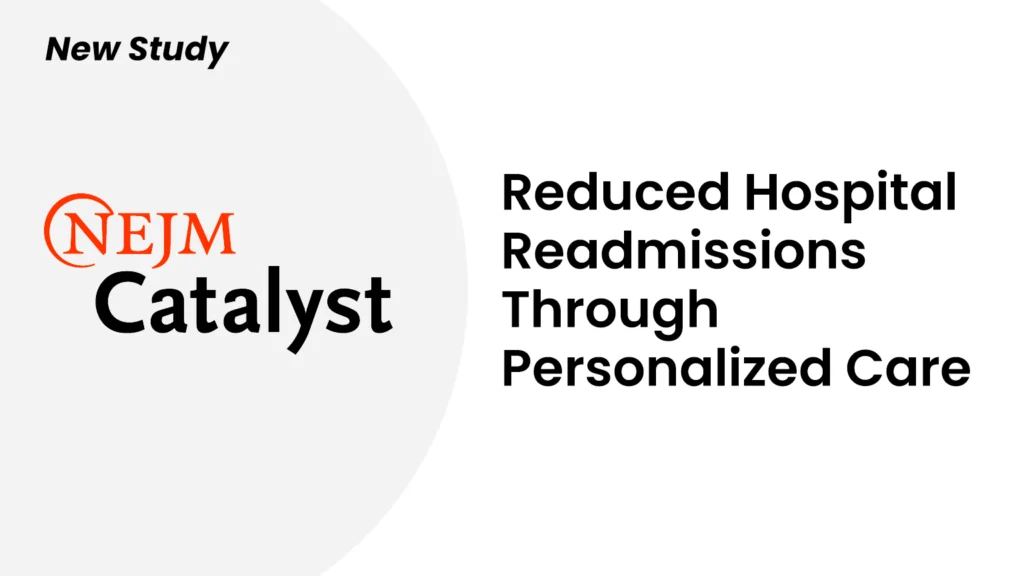Making sure your patients are engaged – one of two key elements driving patient experience – lays the foundation for stronger patient-provider relationships built on trust, empathy, and understanding. Positive relationships can help improve patient satisfaction and yield patient loyalty. And when a patient has a consistent, trusted source of healthcare, health outcomes can improve as well.
The Patient Engagement Playbook
Artera™ recently created “The Patient Engagement Playbook,” which offers six best practices for patient engagement to enable you to foster lasting connections with your patients that will ultimately lead to greater results for both your patients and your organization. The playbook will walk you through six critical steps to increase patient engagement – the sixth and final of which covers creating a continuous healthcare experience for patients.
But before we dive into the significance of providing a continuous healthcare experience, let’s define what engaged patients are:
- Informed – They understand their health status and the recommended treatment.
- Heard – They communicate with their providers and participate in shared decision-making.
- Empowered – They believe they can change their health outcomes.
- Active – They take action on their health based on personal learnings and overall understanding.
Although engaging patients – and keeping them engaged – can be challenging, it is a vital process for attracting and retaining them. Effectively engaging patients in their care is essential to improving health outcomes and staff efficiency, increasing patient satisfaction, and reducing costs while driving revenue.
“The Patient Engagement Playbook” discusses how greater patient engagement can:
Improve health outcomes: Strong patient engagement increases adherence to treatment regimen recommendations among patients, which in turn leads to fewer complications and re-hospitalizations. Several U.S. studies recently reported coordinated care trials that actively engaged patients with chronic disease resulted in significant mortality reductions compared to a control group who merely took appropriate medications. The studies suggest chronically ill patients who are engaged in their care live longer than unengaged peers who otherwise receive similar treatment, meaning health and well-being are fostered by engaged and activated patients. [1, 2, 3]
Enhance staff efficiency: Patient engagement strategies can help reduce front-end staff workload by reducing time spent on phone calls which take up a significant portion of time and can lead to support staff burnout. With more valuable time back, staff can spend more time on direct patient care.
Increase patient satisfaction: Personalized and unique patient engagement enables patients to feel heard and seen and empowers them to make decisions about their care. This can enhance overall satisfaction, and facilitate longer-standing relationships with providers while improving patient experience measures.
Reduce cost and drive revenue: Patient engagement directly contributes to outcomes affecting hospital costs and reimbursement for health systems. Executing effective patient engagement strategies also means better patient retention and referrals.
Providing a Continuous Healthcare Experience (Outside of Your Facility’s Four Walls)
When people think of care, they tend to think of the “visit.” In reality, however, it is so much more than that. The surrounding experiences – scheduling an appointment, after-visit follow-up, filling out paperwork, and billing, to name a few — typically take place outside of a care facility.
In fact, 80% of a person’s health is determined outside the doctor’s office — and since patients are spending little time in facilities, they are frequently making their own decisions around their health on a daily basis. What this means is that a patient’s healthcare journey begins way before even entering a care setting, and is ultimately an ongoing process over the course of their entire life. This makes creating a continuous healthcare experience for a patient vital.
To ensure patients stay activated in their care over time, providers must establish and foster a relationship full of trust and empathy with their patients – acting as a source of continuous patient support. Evan Keyser, Senior Vice President, and Chief Development Officer at LifePoint Health, words it nicely: “It’s all about continuity…The customer service experience sets the consumer’s expectation for the quality of care they receive.”
So, how can you go about providing a continuous healthcare experience for a patient?
1. Keep communication channels open
Both patients and providers recognize just how critical frequent interventions are. Ninety-four percent of providers think interventions such as text reminders, phone follow-ups, or pharmacist mentions have a positive impact on a patient’s ability to successfully follow the care plan developed for them. Seventy-one percent of consumers believe it is very or somewhat important to their health that they have customized alerts and reminders of screenings and checkups.
What’s more, 92% of patients want conversational messaging with their healthcare providers. Conversational Messaging helps to keep direct lines of communication open, empowering patients to manage their care on their own terms whether it’s by asking timely questions, requesting appointment information, or sharing concerns. Enabling open lines of communication can help build a greater level of understanding and trust between a patient and provider, leading to a continuous healthcare experience and a more positive relationship overall.
Ultimately, as patients become more empowered in their care, they are more likely to adopt new healthy behaviors and engage in self-management, translating to improved care outcomes and reduced healthcare spending.
2. Get curious — listen to your patients!
Patient feedback provides valuable information about what patients and service users think about the healthcare services offered. By prompting direct feedback or providing a space for patients to do so, providers can gain greater insight into their patients’ experience and help them decipher what needs further improvement in the way care is delivered. These insights can improve the quality of care, identify any gaps in care, increase patient engagement, and ultimately drive revenue. Providers can send patient satisfaction surveys, interview patients, or invite them to join their organization’s patient engagement committee or advisory board.
When patients have an outlet to express themselves, they feel heard, supported, and respected. Betty Lee, Director of Patient Access at Sansum Clinic, reiterated the benefits of patient feedback in an Artera case study: “This was a way for the patients to tell us ‘We really enjoyed coming to you’ and ‘Thank you for being there.’” But even when a patient isn’t satisfied, Lee explained, “they can text as many words as possible to tell us how they really feel. They’re comfortable enough to just type away,” she said. By providing this outlet for patients, providers enable a continuous healthcare experience — one that is built on honesty, openness, and growth.
As Lee suggested, feedback can highlight the positive aspects of patient experiences, which can in turn help staff feel appreciated. “The positive reinforcement they hear back from patients when they send selfies or emojis is really nice for them,” said Lee. In a time when staff burnout is overwhelming the industry, hearing praise directly from patients and families can “have a dramatic impact on a caregivers’ well-being and serve as a reminder of why they got into healthcare in the first place,” said Paul Jaglowski, co-founder and chief strategy officer of Feedtrail, a company focused on patient feedback. Connecting staff directly to positive feedback has the potential to reduce burnout, Jaglowski believes.
3. Improve your referral management system
As many as 50% of patient referrals to a physician are never completed. Sometimes it’s due to a communication breakdown between doctors and patients. Sometimes patients simply forget to schedule or keep a referral appointment. This is where a strong referral management process becomes crucial for providing a continuous healthcare experience.
Patients who miss their appointments because of ineffective patient referral processes suffer poorer health outcomes than patients who actually attend their appointments as they fail to get the care they need and are more likely to be readmitted to the hospital. When referrals aren’t completed, hospitals also suffer from patient or referral leakage, which ultimately leads to annual revenue losses. In fact, a 2022 ABOUT Healthcare report found that preventing patient leakage could boost revenue by 17%.
The best way to prevent patient leakage and ensure patients receive the care they need is to review your current referral management system. A sophisticated, patient-centric referral management system should automate outreach to patients when a referral is scheduled. For example, once a provider places a referral order in the EHR, the patient should receive an initial message through the patient’s desired communication method — text, phone, or email. This message, sent by the referral specialist, will ask them if they would like to schedule an appointment. If the patient responds “yes,” the specialist’s office can then continue the conversation.
Appropriately managing referrals can help to cut down on missed appointments, reduces patient leakage, and contributes to preventing hospital readmission by ensuring patients get the care and medical expertise they need right after hospitalization. This level of support shows patients that their health is your organization’s top priority, as you guide them toward their next step in the care journey through a simple, streamlined process.
4. Follow-up with your patients post-discharge
When a patient is released from a hospital stay, the hope is that their medical issues have stabilized enough that they can continue their road to recovery at home and any needed post-discharge follow-up is underway. Studies show, however, that nearly one in five people experience an adverse event within three weeks of hospital discharge — but almost 75% of these could be prevented or corrected. Staying in contact with these individuals can help care teams stay aware of any status changes and offer patients a simple way to provide updates.
A 2022 Penn Study highlights just how effective post-discharge follow-up really is. After evaluating the use of automated texting to patients after hospitalization, researchers found it reduces the risk of rehospitalization and the use of acute care resources. They calculated a 55% reduction in the chance that the patient would have to stay at the hospital again within the next 30 days and a 41% decline in the possibility that they would need acute care of any kind within the next month. Patients were also 33% less likely to require the emergency department at all. “In a fragmented health care landscape, relatively simple applications of technology can help patients feel more connected to their primary care practice,” said the study’s first author, Eric Bressman, MD, a fellow in the National Clinical Scholars Program at Penn. “This is especially important as patients recover from acute illness, as it reminds them that they have a medical home to which they can turn for support.”
This simple yet effective form of communication can not only bridge gaps in care but can help further establish a strong connection between the patient and provider, leading to a strong continuous healthcare experience.
Overall, research suggests a continuous healthcare experience is associated with greater patient satisfaction, decreased hospital visits, and increased preventative care measures. While continuous care is beneficial for all patients, it is incredibly valuable for high-risk patients living with chronic conditions as it has been shown to significantly reduce health complications and medical costs. What’s more, providing a continuous stream of support – one that hits nearly every touchpoint in a patient’s life – helps to further build a strong foundation for what should span across a patient’s entire care journey.
Optimized patient engagement strategies are essential for healthcare providers looking to properly address patient needs, which have shifted dramatically as a result of healthcare consumerization and the COVID-19 pandemic. Now more than ever, providers need to consider the six strategies in The Patient Engagement Playbook to facilitate greater patient engagement, connection, and understanding.



